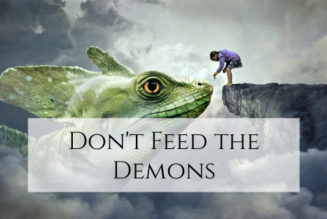Sky-watchers across the Americas and in parts of Europe and Africa will have front-row seats to a nighttime spectacle on May 15 and 16: a long-lasting total lunar eclipse.
The large full moon will be totally eclipsed by Earth, bathing the lunar surface in shades of deep red. This phenomenon is why total lunar eclipses are commonly called blood moons, and this particular eclipse will be one of the longest of the decade.
This eclipse will also appear a little grander than usual. The moon will be near its perigee, or closest point to Earth, making it seem a bit larger in the sky, a phenomenon known as a supermoon. During the eclipse, the moon will be 225,015 miles from Earth.
Additionally, the May full moon is sometimes known as a flower moon in the Northern Hemisphere, a tribute to the colorful blooms that appear in early spring. So the May 15 eclipse may be called a super flower blood moon.
The important thing, though, is that Earth’s shadow will bathe the moon in a deep red—one of the most eye-catching sights of the night sky—for nearly an hour and a half.
The total phase of the eclipse, when the moon is at its deepest red, will begin on May 15 at 11:29 p.m. EDT, and it will last until 12:54 a.m. on May 16 (3:29 a.m. to 4:54 a.m. UTC on May 16). The entire phase of totality will be visible in all of South America and across most of North America, as well as in parts of Africa and Europe. In some parts of the Pacific Northwest, the already-eclipsed moon will rise just before the sun sets, brightening as it climbs into the night sky.
What happens during a lunar eclipse?
Lunar eclipses occur when the sun, Earth, and moon line up properly for the moon to pass into Earth’s shadow. This doesn’t happen every time the moon makes its monthly trek around our planet because the moon’s orbit is tilted. But roughly three times a year, the moon passes through at least part of Earth’s shadow.
Lunar eclipses happen only during a full moon, and about 29 percent are total lunar eclipses, when the entire moon passes through the dark central cone of Earth’s shadow, known as the umbra.
The ruddy coloration of the fully eclipsed lunar disk occurs because sunlight hitting the moon gets filtered through Earth’s atmosphere, scattering the blue light and letting the red pass through. It’s the same reason we see the normally yellow sun turn red during sunsets.
How to see the blood red moon
Unlike a solar eclipse, which requires special equipment to observe safely, you can watch a lunar eclipse with unaided eyes. A pair of binoculars allows you to see an impressive amount of detail on the moon, but you can watch a lunar eclipse without any gear from anywhere you could see the full moon.
The moon will dim to a dull charcoal color before it turns blood red, and the color can vary significantly from one eclipse to the next depending on the particles in our planet’s atmosphere. Clouds of ash thrown into the stratosphere by a recent volcanic eruption in the Kingdom of Tonga in the southern Pacific Ocean, for example, may turn the moon’s face an even deeper shade of red than a typical lunar eclipse.
Lucky sky-watchers across the eastern half of North America and in all of Central and South America will be able to see the entire spectacle from beginning to end. Most of western North America can see at least part of the eclipse as well, with only parts of Alaska and northern Canada missing it entirely.
At least part of totality will also be visible from most of Africa and Western Europe, while some parts of West Asia will be able to see partial phases of the eclipse.
Keen-eyed observers may notice that, during totality, the sky surrounding the moon will appear much darker, revealing nearby bright stars. The orange-colored star Antares, for instance, which will be visible to the bottom left of the moon. Sky-watchers away from light pollution may even be able to spot the glow of the Milky Way during the eclipse.
This eclipse marks the first of two total lunar eclipses visible from North America this year. The next one will be on November 8, and coincidentally, it will last almost exactly as long as the May 15 eclipse.
The eclipse this spring, however, will occur earlier in the night, making it the perfect opportunity to stay up and watch the celestial show.
Join Our Telegram Group : Salvation & Prosperity








